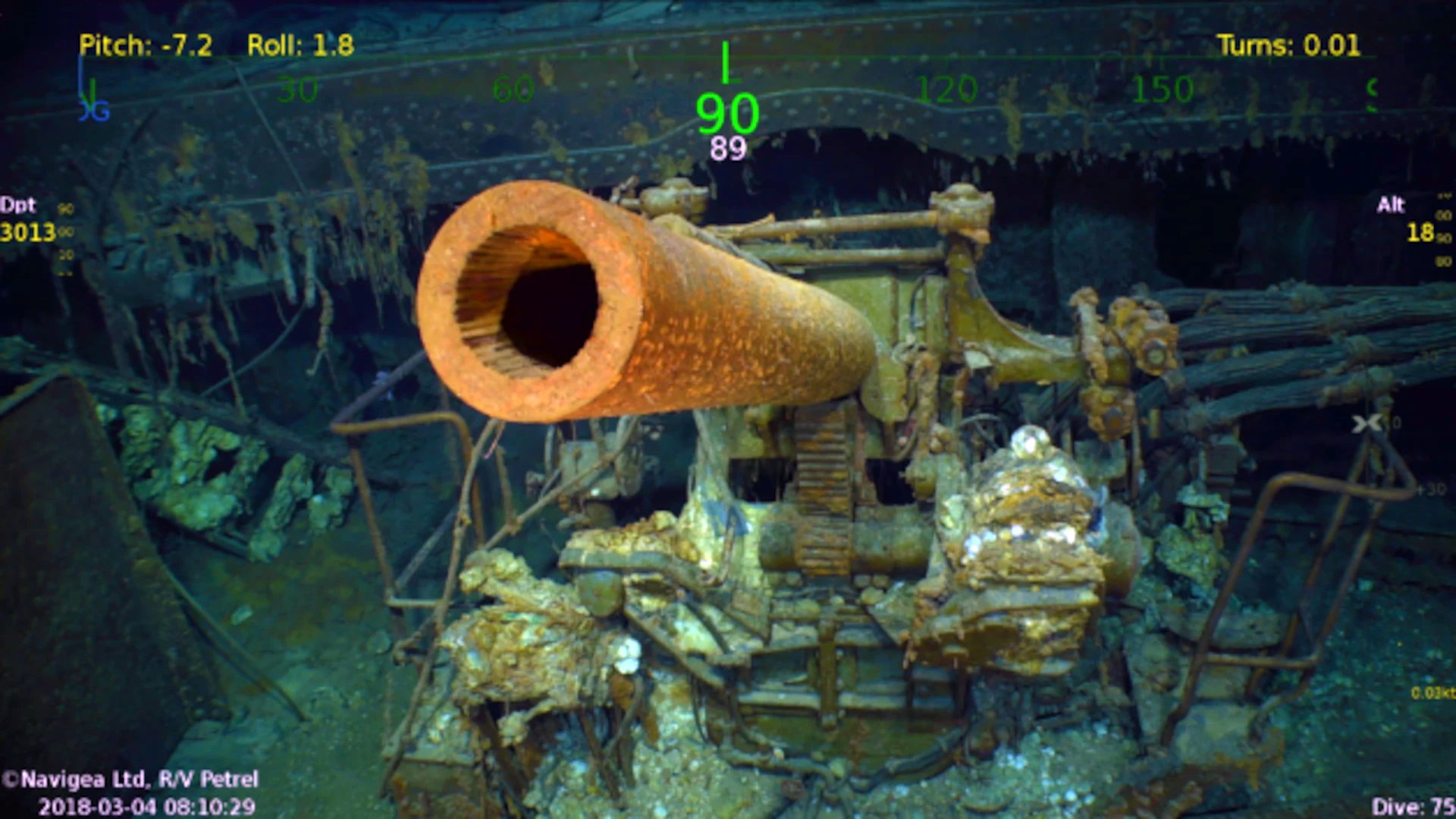As members of the House of Representatives debate the details of their latest draft of the National Defense Authorization Act (NDAA), one possible addition came seemingly out of left field, or maybe 20,000 leagues. It could change the public’s access to information about military ships and aircraft that have sunk. The amendment, put forward by Rep. Austin Scott, a Georgia Republican, is said to have been motivated by unlawful salvaging operations that occur at these sites.
Crafted under the oversight of the Senate Armed Services Committee and the House Armed Services Committee, the NDAA is an annual policy bill that both authorizes funding for defense programs and includes provisions regarding other defense policy-related initiatives. Amendments to the NDAA are authored by representatives throughout the NDAA’s draft process and elucidate the changes they would like to see applied to the bill before it becomes law. It is through this annual bill, and various other yearly defense appropriations bills, that the U.S. Congress is granted the ability to oversee the implementation of the Defense Department’s budget.
This year, Rep. Scott’s amendment is certainly one of the more intriguing among the bunch and it is also important to note that as of right now, the House Armed Services Committee has yet to vote on whether to include this amendment in the latest NDAA draft.
“This amendment would allow service secretaries to withhold information about the location of Sunken Military ships and aircraft from public disclosure,” reads the summary of the amendment. “Scrappers are filing FOIA [Freedom of Information Act] requests to get the locations of sunken ships in order to remove the steel for its scrap value.” At the same time, the actual language reads, in part:
“… The Secretary concerned may withhold from public disclosure information and data about the location or character of a sunken military craft under the jurisdiction of the Secretary, if such disclosure would increase the risk of unauthorized disturbance of one or more sunken military craft.”

If Rep. Scott’s amendment is to become a part of the final NDAA draft, the accessibility of official information surrounding crashes and wrecks that involve military craft could become significantly restricted. Being that few details are currently available aside from the amendment itself, The War Zone reached out to Rep. Scott to see if he could add any additional color to the situation. His office responded through email.
“There has been a disgraceful rise in illegal salvaging of sunken military ships and aircraft from World War II for scrap metal,” reads Rep. Scott’s statement. “My amendment allows the DOD to withhold the location of sunken military crafts from persons who want to use the information to desecrate war graves.”
The focus of the language does appear to also include withholding data that would reveal the specific characteristics of the wreck, not just its location.

How the Pentagon would manage to determine whether or not disclosing the details of a wreck would increase the risk of “unauthorized disturbance” is unclear, but there is the possibility that the vague guidelines could lead to broadly discriminatory access to public information. While it is absolutely important to let those who perished aboard military ships and planes to rest in peace, the language doesn’t specifically point to wrecks with remains in them. Limiting information on the loss of military aircraft and ships at sea could also hinder the public’s ability to understand the nature of their loss. It could be argued that the amendment could allow the Pentagon to say less about an incident than it would have otherwise regardless of the validity of such a decision.
If anything, it’s worth mentioning that the Defense Department could perhaps be more successful in addressing illegal salvaging operations if they just clarified some of the existing periphery regulations.
Even though there are a number of laws and norms already in place when it comes to treasure hunting and other salvage operations in international waters, efforts to exercise control over these activities can often be a gray area. Some examples of these laws include the 2001 UNESCO Convention on the Protection of the Underwater Cultural Heritage, which provides general best practices for underwater excavations, and the Maritime Law of Salvage, which dictates how anyone who helps recover another party’s ship is entitled to a level of compensation. There are also customary international laws, like the sovereign immunity principle, which can further complicate who exactly has complete sovereignty over waters where wrecks might be present.

Salvage disputes and accusations of treasure hunting have certainly been issues that the U.S. military has had to deal with in the past. In 2014, illegal salvage operations were reported to be plaguing the 78-year-old wreck site of USS Houston, a U.S. Navy vessel that was sunk in the South Pacific by the Imperial Japanese Navy during World War II. In 2017, it was revealed that the unmarked graves of thousands of sailors and a number of warships, including those belonging to the United States, were illegally raided by salvage divers. While these instances are undoubtedly distressing, they at the very least prove that Scott’s amendment, or at least its stated intention, isn’t unfounded.
A vote on the committee’s final draft of the National Defense Authorization Act and its approved amendments will likely be held tonight or early tomorrow morning. Weeks down the road, following negotiations in the House and Senate, the final congressional draft may be voted into law by this fall. At that point, The War Zone will update you on whether or not Rep. Scott’s amendment made the cut.
Contact the author: Emma@thewarzone.com
